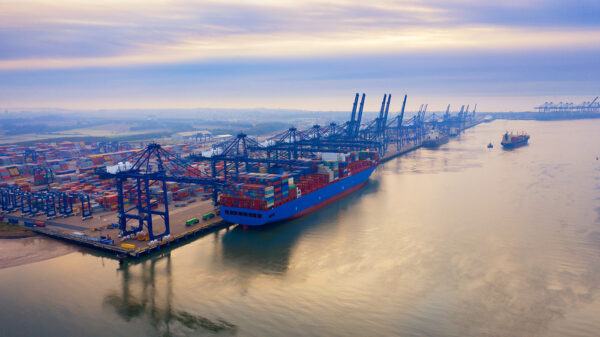
Navigating the 2024 Minimum Wage Hike
The wheels of the logistics industry are the literal and figurative backbone of global commerce. Every year, we see the landscape of this industry evolve as regulations, technologies, and economic factors come into play. However, one of the most significant changes on the horizon is the slated rise in the national minimum wage. Scheduled for implementation in April 2024, this hike is set to impact the labour-intensive shipping and logistics sectors in profound ways. For employers and professionals in these fields, understanding the ripple effects and preparing for such changes is not just beneficial—it’s critical for continued success.
The Uphill Climb of Policy: Minimum Wage Movement
As the calendar flips to 2024, a new era in labour policy will begin. The National Minimum Wage (NMW) will undergo revisions, with broad implications for wage structures across the UK. Acknowledging the hard work and the necessary livelihood that employees within the logistics domain contribute, the NMW increase also carries the weight of additional costs and strategic recalibrations for players in this pivotal sector.
With the promised raise, employers must chart a course to maintain financial viability while ensuring fair wages for their workers, who, in a sense, are the ambassadors of their brand to the wider market. Whether you operate a fleet of internationally traversing freighters or manage a bustling warehouse, the NMW surge requires strategic navigation that accounts for the entire ecosystem of the logistics industry.
Unpacking the Direct and Indirect Costs
Rising wage floors impose an obvious direct financial strain on businesses. For warehouse operators, every added pound to the hourly wage scales up, affecting overtime pay and overtime hours. For road transport companies, every penny counts toward fuel, vehicle maintenance, and insurances, which indirectly link to the salaries paid to diverse roles, from truck drivers to loading crew.
A hike in the NMW also can tangle the web of supply chain costs. This is seen primarily in areas of temporary staff, where wages may be directly benchmarked against the NMW. The adverse effects may lead to higher prices for shipping services, less aggressive fulfilment timings, or even the outsourcing of certain tasks as cost pressures mount.
Innovating for Efficiency: Leveraging Technology
As the saying goes, necessity is the mother of invention, and the fiscal pressures induced by a higher NMW can be the nudge that logistics companies need to fully embrace innovative technologies. Automation in warehousing, for instance, can potentially slash labour costs in environments where mundane, repetitive tasks are ripe for machine-assisted solutions.
Similar waves of innovation can be directed towards the optimization of routes, reducing idle times, and increasing load factors, which not only bring cost enhancements but also ensure that higher wages are justified by commensurate returns in efficiency and productivity.
The HR Play: A Strategic Rethink
A rising NMW is, in essence, a HR challenge for the logistics sector. It presents the need to attract, retain, and manage a workforce in a new economic context, all while balancing the books. Employers need to explore creative solutions that go beyond base wages. This includes employee benefits, career advancement pathways, and fostering a workplace culture that values and invests in its workforce.
This is also an opportunity to engage with the government and industry bodies to ensure that policies on training and development are carved out that align with the increased expectations and costs associated with higher wages.
Sustaining Industry Growth: The Need for Support
An industry is only as strong as the sum of its parts. The logistics sector stands at the forefront of ever-important global trade, necessitating a robust strategy to ensure scalability in the face of regulatory shifts. This calls for collaboration among businesses, educational institutions, and policy makers to create an ecosystem that supports the human capital and technological infrastructures vital for the sector’s growth.
More than ever, this is a time for innovative thought and decisive action. From targeted subsidies that foster upskilling to incentives that encourage the sustainable adoption of higher-wage-compliant technologies, the roadmap forward must reflect a collective vision for the continuous, upward mobility of the shipping and logistics industries.
Forecasting the Road Ahead
Change is the one constant in the dynamic field of logistics. As the industry gears up for the challenges and opportunities that the 2024 NMW increase will bring, proactive adaptation and strategic foresight will be the guiding stars. By preparing for these changes now, businesses can not only offset the costs but also foster an environment of growth that is sustainable and supportive for all wings of the logistics enterprise.
In conclusion, the impending NMW rise is not just a financial exercise; it is an opportunity for the shipping and logistics industry to redefine its value proposition, prioritize its people, and set sail for a future that remains anchored in progress and prosperity.
For shipping and logistics decision-makers, the recipe for success in this new economic era lies in a strategic blend of operational efficiency, HR innovation, and industry-wide cooperation. As the hour approaches for this landmark policy shift, it is with preparedness and optimism that businesses can chart a course to navigate the minimum wage waters, turning challenges into chances for growth and excellence.






